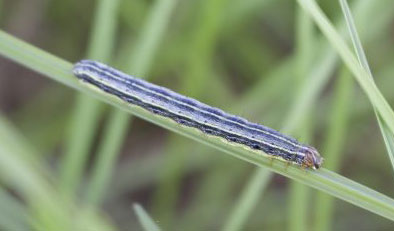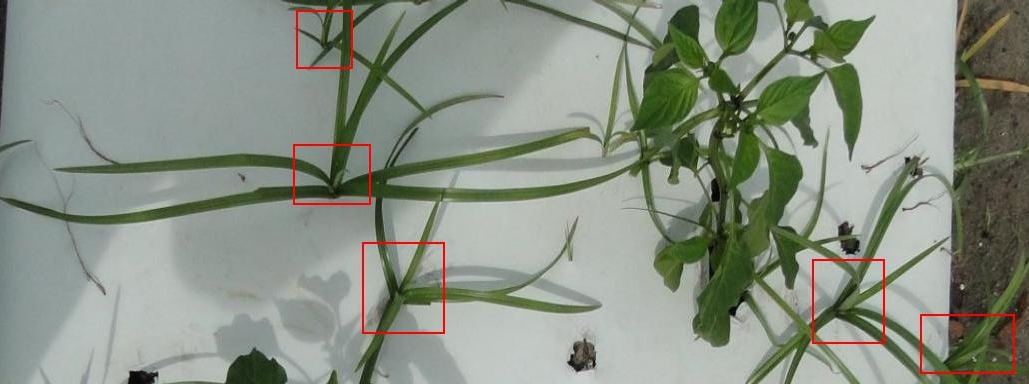By Clint Thompson One weed is expanding rapidly across Florida. “Ragweed Parthenium, I would say is the biggest issue that’s relatively new. Its range seems to be rapidly expanding. Not that it didn’t ever occur here before, but I never saw Ragweed Parthenium in any of the specialty crop fields around us, and that’s mostly tomatoes and strawberries. Now I …
Insect Populations Up Across Alabama
By Clint Thompson As temperatures and dry conditions continue to increase across Alabama, so are insect infestations. According to the Alabama Insect Pest Monitoring Report, as of May 28, moth numbers were up for multiple insects, especially when compared to this time last year. Fall armyworms have increased the most. In 19 different locations across the state, there were 187 …
Tips to Control Nematodes in Carrot Production
By Abolfazl Hajihassani Plant-parasitic nematodes are known as hidden enemies and restrain carrot production in the United States. In Georgia, carrots are among the most seriously affected vegetables due to heavy infestation of root-knot nematodes. These pests cause especially severe problems in sandy-textured soils in all carrot-growing areas. Three major species — Meloidogyne incognita, M. arenaria and M. javanica — …
Protect Future Crops From Weeds During Fallow Period
By Clint Thompson It is the fallow period for much of Florida’s vegetable and specialty crop producers. It is the time every season between June and August when it is too hot to produce any crops. But that doesn’t mean producers aren’t preparing for the upcoming fall season. The fallow times of the year allow growers to protect their future …
Weed Control Key in Vegetable Production
By Clint Thompson Weed control remains a vital management tool for Florida vegetable and specialty crop producers. Weeds like nutsedge, ragweed and pigweed can fight for essential nutrients and water that crops need to grow and produce yields. But according to Peter Dittmar, University of Florida/IFAS Extension weed scientist, there are other reasons for producers to try to keep their …
Thrips Infestations Causing Damage in Central Florida
According to the South Florida Pest and Disease Hotline, vegetable producers in West central Florida report that chili thrips are wreaking havoc in pepper and watermelon fields. Thrips are causing serious damage to watermelons and peppers in the Plant City area of Hillsborough County. It’s been a carry-over effect in most cases. Thrips have moved over from the strawberry crops …
Nematode Issue: Pest Still a Problem for Vegetable, Specialty Crop Producers
By Clint Thompson Nematodes were not any less of a problem this year for Florida producers. But they weren’t any worse, either, said Johan Desaeger, Assistant Professor of Entomology and Nematology at the UF Gulf Coast Research and Education Center. “They’re always bad in Florida. But if they were worse this year or not, it’s hard to tell. When I …
Irrigation Key in Managing Pests
One of the first steps to conducting a sustainable integrated pest management system is timely irrigation. If plants aren’t watered adequately and on a timely basis, plants can become stressed, making them more vulnerable to insect pests, according to Ayanava Majumdar, Extension Professor in Entomology and Plant Pathology at Auburn University. He offers a few tips for water management in …
Be Prepared: Spider Mite Populations Could Spike During Hot, Dry Conditions
By Clint Thompson It’s expected to get hot and dry across the Southeast. Some areas are expected to approach 100 degrees Fahrenheit. For vegetable and specialty crop producers, they need to keep an eye on spider mites, believes Stormy Sparks, University of Georgia Cooperative Extension vegetable entomologist. “Getting hot and dry like this and stay that way for a while, …
Updated: Alabama Pest Report
By Clint Thompson Certain insect pest populations are increasing across Alabama. According to the 2021 Alabama Pest Report, the moth counts for fall armyworms and corn earworms are high. Data taken from sticky wing pheromone traps from eight locations across the state show that the fall armyworms numbered 82, up from the previous report of 20. Corn earworms were at …












